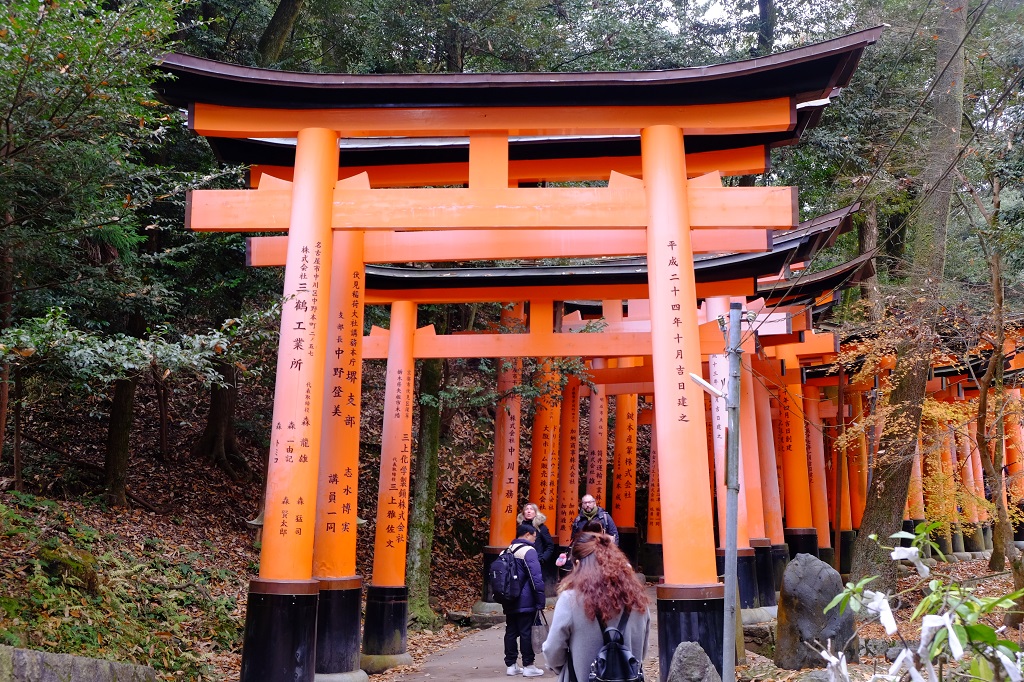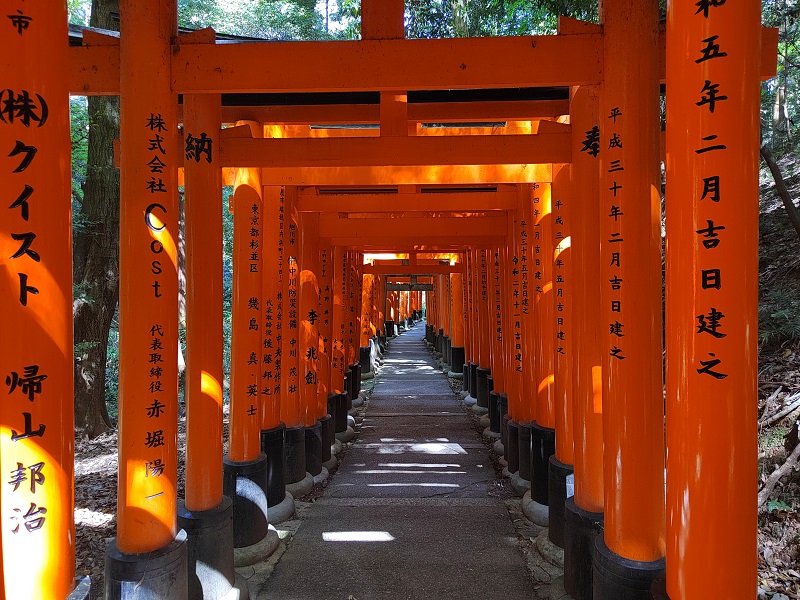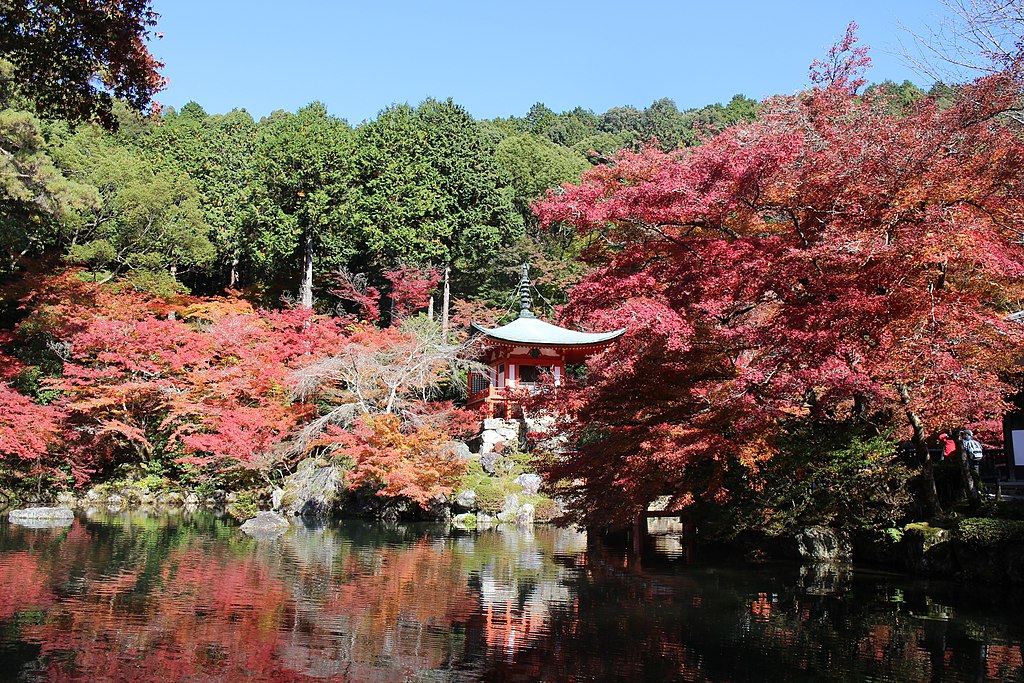What to do in southern Kyoto
In the south of Kyoto is the Fushimi Inari shrine, characterised by its long path strewn with red Torii.

Photo by Japanforeveryone.com
The Fushimi Inari Taisha Shrine is located in the city of Kyoto and is one of Japan’s most important sacred sites. Dedicated to the fertility god of the same name, the shrine is particularly famous for its numerous torii, the traditional wooden doors connected to each other that create an evocative path within the forest surrounding the shrine. The countless orange-red torii, mostly donated by individuals and companies as a sign of gratitude, create a magical and unique atmosphere. The shrine is a destination for both religious pilgrimages and tourists wishing to immerse themselves in Japanese culture and tradition.

Photo by Japanforeveryone.com
Practical information
| Show location on Google Maps | |
| Official website |
|
| Always open | |
| No closing days | |
| Free | |
| 5 minutes’ walk from JR Inari train station on the Nara Line 5 minutes’ walk from Fushimi Inari Station on the Keihan Main Line 5 minutes’ walk from Keisatu-gakkomae bus stop (line 5) |
Tofukuji Temple, located in the city of Kyoto, is one of Japan’s most important Zen temples. Founded in 1236, the temple houses many historic buildings and spectacular gardens, including the Hojo Temple and the Zen Garden. The spectacle offered by the linden trees, the golden autumn leaves and the snow is undoubtedly a sight that fascinates visitors. The Tofukuji Temple is a must-see attraction for those who want to breathe in an atmosphere of peace and tranquillity in a corner of Kyoto. The temple represents a historical treasure that testifies to the importance of Zen Buddhism in Japanese culture.
Celuici, CC BY-SA 3.0, via Wikimedia Commons
Practical information
| Show location on Google Maps | |
| Official website |
|
| 9:00-16:30 (April to October) 8:30-16:30 (November to early December) 9:00-16:00 (early December to March) Last entry 30 minutes before closing time |
|
| No closing days | |
| 400 Yen (Tsutenkyo Bridge and Kaisando Hall) 400 Yen (Hojo and Gardens) |
|
| 10 minutes’ walk from JR Tokufuji train station on the Nara line (140 yen from Kyoto) 10 minutes’ walk from Tokufuji station on the Keihan Main Line 10 minutes’ walk from Tokufuji bus stop (line 202, 207 or 208) and Tokufuji-michi bus stop (line 5) |
The Daigoji Temple, located in the city of Kyoto, is a place of great historical and spiritual importance. Founded in 874, the temple is famous for its majestic structures and beautifully landscaped gardens. The highlight of the temple is the five-storey Pagoda, an architectural marvel that offers a breathtaking panoramic view of the city. In addition, the temple is famous for its annual Cherry Blossom Festival, when its gardens are illuminated by thousands of cherry blossoms in bloom. The Daigoji Temple is a journey through time and a spectacle for the eyes and soul.
Suicasmo, CC BY-SA 4.0, via Wikimedia Commons
Practical information
| Show location on Google Maps | |
| Official website |
|
| Sanboin, Shimo Daigo and Reihokan Museum | |
| 9:00-17:00 (until 16:30 from early December to February) Last admission 30 minutes before closing |
|
| No closing days | |
| 1500 Yen (from 20 March to 15 May and from 15 October to 10 December) 800 Yen (the rest of the year) |
|
| Kami Daigo | |
| 9:00-16:00 (until 15:00 from December to February) Everyone must return to the base of the mountain by 17:00 |
|
| No closing days | |
| 600 Yen 500 Yen (if in possession of a ticket for Sanboin, Shimo Daigo and Reihokan Museum) |
|
| 10 minutes’ walk from Daigo metro station (T03) |



